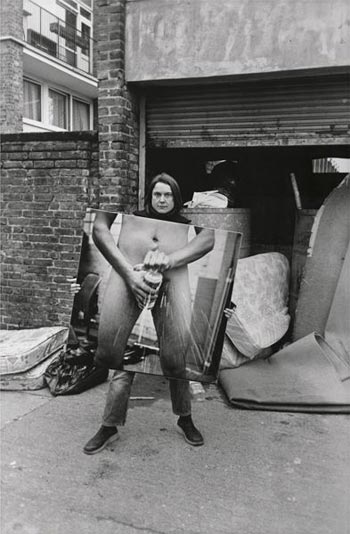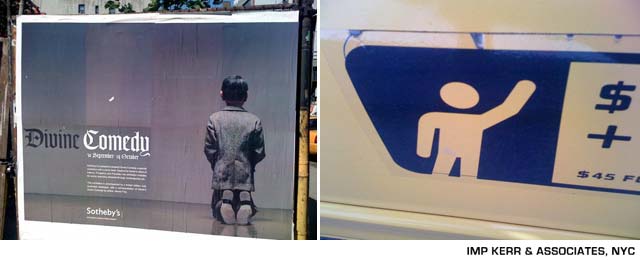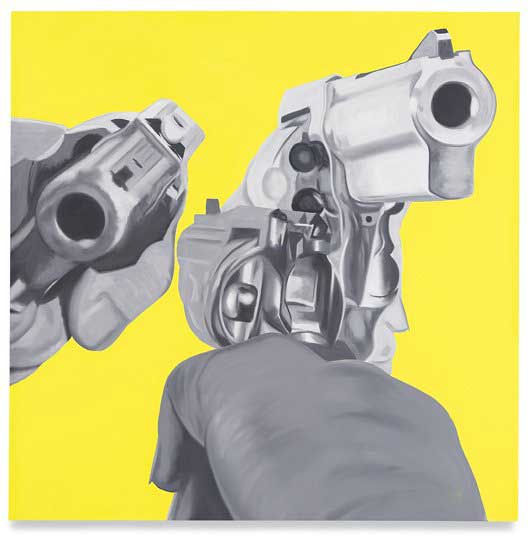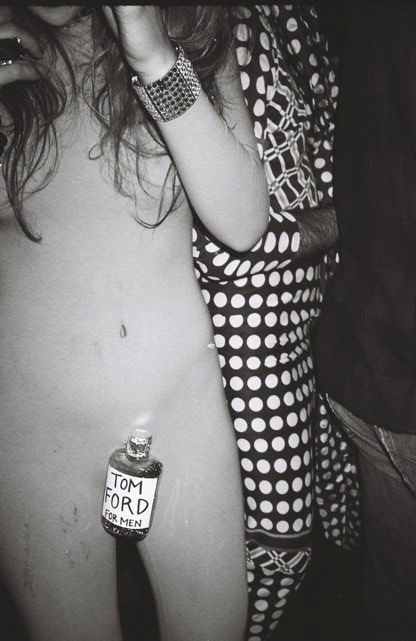U.S.
They’re wounded but they just keep on climbin’, and they sleep by the side of the road

A long-time Hollywood publicist was fatally shot inside her Mercedes-Benz, which then crashed into a light pole in Beverly Hills. Ronni Chasen, 64, was shot five times in the chest around 12:30 a.m. near Whittier Drive and Sunset Boulevard, according to Beverly Hills police.
Officers responding to the scene found Chasen’s black, late-model E-350 sedan crashed into a light pole on Whittier just south of Sunset. Chasen was taken to Cedars-Sinal Medical Center, where she was pronounced dead, according to the coroner’s office.
Police said they had no information about a suspect or motive for the shooting.
Chasen, the former senior vice president of worldwide publicity at MGM, was a well-known figure in Hollywood film and publicity circles. (…)
Chasen’s death was the third homicide this year in Beverly Hills.
‘Bisexuality immediately doubles your chances for a date on Saturday night.’ –Woody Allen

Does the Fed print money? If so, how?
It’s true that the Fed is not literally printing the $20 bills that end up in your wallet. As a commenter on your own blog has noted, that’s the job of the Bureau of Printing and Engraving. But money includes both currency in circulation and the reserves that commercial banks keep on deposit at the Fed. By that definition, the Fed is indeed printing it.
Here’s how QE works. The Fed buys a $100 bond from Bank of America. The bond gets added to the Fed’s assets. Bank of America has an account at the Fed. The Fed, with a keystroke, puts a $100 into B of A’s account. Where did the money come from? Thin air. Bank of America can visit its friendly neighborhood Fed branch and withdraw that $100 in the form of bills and coins. So for practical purposes the distinction between currency and reserves is meaningless; the monetary base includes both.
photo { Steven Ahlgren }
Catch me swoopin Bentley coupe and switchin lanes

New Yorkers are accustomed to strong odors, but several years ago a new aroma began wafting through the city’s streets, a smell that was more unnerving than the usual offenders (trash, sweat, urine) precisely because it was so delightful: the sweet, unmistakable scent of maple syrup. It was a fickle miasma, though, draping itself over Morningside Heights one afternoon, disappearing for weeks, reemerging in Chelsea for a few passing hours before vanishing again. Fearing a chemical warfare attack, hundreds of New Yorkers reported the smell to authorities. (…) The city quickly determined that the odor was harmless, but the mystery of its origin persisted for four years.
During maple syrup events, as they came to be called, operators at the city’s popular NYC311 call center—set up to field complaints and provide information on school closings and the like—were instructed to reassure callers that they could go about their business as usual.
But then city officials had an idea. Those calls into the 311 line, they realized, weren’t simply queries from an edgy populace. They were clues.
On January 29, 2009, another maple syrup event commenced in northern Manhattan. The first reports triggered a new protocol that routed all complaints to the Office of Emergency Management and Department of Environmental Protection, which took precise location data from each syrup smeller. Within hours, inspectors were taking air quality samples in the affected regions. The reports were tagged by location and mapped against previous complaints. A working group gathered atmospheric data from past syrup events: temperature, humidity, wind direction, velocity.
Seen all together, the data formed a giant arrow aiming at a group of industrial plants in northeastern New Jersey. A quick bit of shoe-leather detective work led the authorities to a flavor compound manufacturer named Frutarom, which had been processing fenugreek seeds on January 29. Fenugreek is a versatile spice used in many cuisines around the world, but in American supermarkets, it’s most commonly found in the products on one shelf—the one where they sell cheap maple-syrup substitutes.
Fifteen months after the Maple Syrup Mystery was solved, mayor Michael Bloomberg paid a visit to the 311 call center. (…) Launched in March 2003, 311 now fields on average more than 50,000 calls a day, offering information about more than 3,600 topics: school closings, recycling rules, homeless shelters, park events, pothole repairs. The service has translators on call to handle some 180 different languages.
photo { Mark Borthwick }
The same 2-step wit a lil’ twist

{ Interborough Subway, 14 St. to 42nd St., New York, May 21, 1905 | More: Brooklyn to New York via Brooklyn Bridge, 1899 | video }
related { 50 Reasons to Be Pretty Damn Euphoric You Live in New York City }
Semi suite

You write in Art is Work that the very famous “I ‘Heart’ New York” logo you designed was originally proposed as something else.
It was just a little typographical solution with two lozenges and a word in it, two ovals, and the word inside it; it was not in any way distinguished. But I always thought the whole thing was going to be a three-month campaign.
{ Interview with Milton Glaser | The Believer | Continue reading | Images: I Love NY and New York magazine logotypes designed by Milton Glaser | video: The “I Love New York” Ad Campaign Origin }
related { An Introduction to Graphic Design | Design Observers | full story }
By Jove, I often wanted to see the Mourne mountains. Must be a great tonic in the air down there.

I answered, “If you’re a terrorist, you’re going to hide your weapons in your anus or your vagina.”
“Yes, but starting tomorrow, we’re going to start searching your crotchal area–this is the word he used, ‘crotchal’–and you’re not going to like it.”
“What am I not going to like?” I asked.
“We have to search up your thighs and between your legs until we meet resistance,” he explained.
photo { Ralph Mecke }
Ask Lictor Hackett or Lector Reade of Garda Growley or the Boy with the Billyclub
Casino-resort developer Steve Wynn is betting big on the art market this fall. Mr. Wynn has enlisted Christie’s to auction off a Roy Lichtenstein painting for at least $40 million at its major sale of contemporary art on Nov. 10 in New York.
The 1964 painting, “Ohhh…Alright…,” depicts a pixilated redheaded woman clutching a telephone. (…) Mr. Wynn bought the work from a New York gallery, Acquavella, a few years ago. Before that, the painting belonged to actor and writer Steve Martin. Mr. Martin confirmed he once owned the work; Mr. Wynn declined to comment.
“Ohh…Alright…” has never been auctioned off before, but it has been shown to collectors on the private marketplace, dealers say. Most notably, it was included in a not-for-sale show of the artist’s “Girls” series two years ago at New York’s Gagosian Gallery. (…)
At the market’s peak two years ago, Christie’s privately brokered the sale of another 1964 Lichtenstein redhead, “Happy Tears,” for roughly $35 million, up from the $7.1 million the auction house got for that same work six years earlier, according to Brett Gorvy, Christie’s international co-head of postwar and contemporary art.
{ Wall Street Journal | Continue reading }
No one except Wynn himself might have imagined it, but in the past two years, the Las Vegas resort mogul has become one of the world’s most successful art dealers/warehousers. Looking at the fruit of one large purchase Wynn made in March 1998 (just one of many acquisitions he or his company has made), he appears to be looking at a potential 40 percent to 50 percent appreciation on an investment of $50 million.
Beginning in November 1996, Mirage Resorts President and CEO Steve Wynn began collecting art for the opening of Bellagio, an upscale resort in Las Vegas. Yet even before Bellagio and the Bellagio Gallery of Fine Art opened in October 1998, Wynn had become an art dealer, trading the works he acquired.
While Wynn picked out art for his company to purchase, he also bought for himself. Most notable is a group of seven contemporary paintings for $50 million from New York dealer William Acquavella on March 9, 1998. The math (admittedly, somewhat speculative), shows that Wynn has sold three of the paintings for around $37 million and two others worth about $4 million for undisclosed prices. And he still owns two that are worth over a total of $20 million, easily. Here’s a list of the paintings in question and, where possible, information on what has become of them.
Robert Rauschenberg, Small Red Painting, 1954
Combine painting, ca. 28 x 21 x 5 in.
Wynn ‘98 valuation: $3.4 million
Sold after Bellagio opened
Buyer and sale price are unknownCy Twombly, Untitled, 1961
Acrylic, colored crayons and graphite on canvas, 40 x 58 in.
Wynn ‘98 valuation: $847,458
Sold before Bellagio opened
Buyer and price are unknownFranz Kline, August Day, 1957
Oil on canvas, 92 x 78 in.
Wynn ‘98 valuation: $2.5 million
Sold to PaceWildenstein, where it was for sale at $4 million
Presumed net to Wynn: around $3.2 millionRoy Lichtenstein, Torpedo…Los!, 1963
Oil on canvas, 68 x 80 in.
Wynn ‘98 valuation: $12.7 million
Sold spring ‘98 for around $14 million to Microsoft architect guru Charles SimonyiJasper Johns, Highway, 1959
Encaustic and collage on canvas, ca. 34 x 27 in.
Wynn ‘98 valuation: $9.3 million
Sold summer ‘99 for around $20 millionWillem de Kooning, Police Gazette, 1955
Mixed media on canvas, ca. 43 x 40 in.
Wynn ‘98 valuation: $11.9 million
Remains in Wynn’s collectionJackson Pollock, Frieze, 1953-55
Oil, enamel and aluminum paint on canvas, ca. 26 x 86 in.
Wynn ‘98 valuation: $9.3 million
Remains in Wynn’s collection
bonus:
videos { Wynn Las Vegas TV Commercial, 2005 | Encore Las Vegas TV Commercial, 2008 }
Slightly shopsoiled but you would never notice, seven fingers two and a penny

{ May 2, 1975: Los Angeles Mayor Tom Bradley, left, and Los Angeles County Supervisor Baxter Ward hold a news conference in an old Pacific Electric tunnel to propose an 80-mile light-rail system that would use the former tunnel for part of its downtown connection. The project was never built. | LA Times | Continue reading }
‘It’s not who you know, it’s who you blow. I don’t have a hole in my jeans for nothing.’ –Terry Richardson
How much do you confide in friends?
In the United States, friends often share intimate details of their lives and problems, but in Japan this degree of self-disclosure between friends is much less common. A new study published in Psychological Science by an American researcher living in Japan suggests that this difference may be due to distinct social systems, in particular the extent to which there are opportunities to make new friends in each culture.
‘They talk of the dignity of work. The dignity is in leisure.’ –Herman Melville

The Return of the Three-Martini Lunch
If you have a mixologist making complicated drinks from esoteric-sounding ingredients, people don’t even feel guilty that they’re drinking. Jon Kamen, chairman and CEO of New York-based production company @radical.media, doesn’t. He only goes out to lunch once a week, but when he does, he often goes to EN Japanese Brasserie and orders a drink, such as their combination of Japanese liquor shochu and oolong tea. “They’ve created certain cocktails that I don’t look at as a drink so much as a complement to the meal I’m having,” he says.
photo { Sarah Lucas }
‘Obviously the facts are never just coming at you but are incorporated by an imagination that is formed by your previous experience.’ –Philip Roth
Ask any Ashkenazi American Jew about his family’s arrival in the United States, and you’re likely to hear a certain story. With minor variations, it goes something like this: “My great-grandfather was called Rogarshevsky, but when he arrived at Ellis Island, the immigration officer couldn’t understand his accent. So he just wrote down ‘Rogers,’ and that became my family’s name.”
Most American Jews accept such stories as fact. The truth, however, is that they’re fiction. Ellis Island, New York City’s historic immigrant-absorption center, processed up to 11,000 immigrants daily between 1892 and 1924. Yet despite this incessant flow of newcomers, the highest standards of professionalism were demanded of those who worked there. All inspectors—many of whom were themselves immigrants, or children of immigrants—were required to know at least two languages; many knew far more, and all at the native-speaker level. Add to that the hundreds of auxiliary interpreters, and together you’ve covered nearly every possible language one might hear at Ellis Island. Yiddish, Russian, and Polish, in this context, were a piece of cake.
Hypnosisss can cure you of your psssychosssis

Nobody asked me, but the building was designed for the Astor Estate by Herman Lee Meader, a Harvard-trained architect who gave legendary parties and kept a boa in his penthouse.
{ Christopher Gray | Photo: Ray Sawhill }
Herman Lee Meader (died February 14, 1930 at 55) was an American architect and author. He designed several prominent buildings in Manhattan, both commercial and residential, as well as much work on the Astor estate, including the Waldorf building located at 8 west 33rd St., then the heart of the fashionable shopping district. Meader lived in the Waldorf Building penthouse, where he created a surrounding rooftop Italian garden. There he held elaborate parties which attracted musicians, artists, writers, prizefighters, chess players and others—at one, Meader staged a fight between a black snake and a king snake.
bonus [click to enlarge]:
{ NY Times }
Kod knows. Anything ruind. Meetingless.

Is it Easy to be an Urban New York Ant?
If scientists learn how critters adapt to difficult-to-colonize locations (especially ants, which colonize just about every available habitat, and are able to make quick decisions), they will be more likely to learn how to maintain biodiversity in more readily habitable locations.
With this goal in mind, Marko Pecarevic and coworkers have studied ant life on street medians in New York City.
Why study ant life on street medians?
Current hypotheses state that wider street medians should host more species. This is an extrapolation from analogous studies in natural environments.
However, there’s good reason to suspect that unique features of urban life may result in different ecological adaptations. Human disturbance, for example, may be more prevalent on wider street medians, disrupting the local urban ecology.
Furthermore, it’s possible that ants treat street medians either as habitable islands (surrounded by inhabitable pavement), or a connecting patchwork linking more habitable environments (e.g. plants in sidewalk cracks). These are the kinds of questions probed by Pecarevic and coworkers.
The scientists sampled ants from 44 street medians in New York City in July 2006. (…) The scientists collected over 6600 ants from 13 species and 11 genera (the next highest classification above species). Ninety-four percent of the ants were from one of three species. The first is non-native, and the latter two are native.
photo { Sotheby’s Divine Comedy billboard featuring Maurizio Cattelan, Him, 2001 + cab door, 10 Ave, between W 28th and W 29th st, Thursday, October 7, 2010 }
Cheche, get the yayo

{ James Rosenquist, Wild West World, 1996 | Related: Tennessee is one of four states, along with Arizona, Georgia and Virginia, that recently enacted laws explicitly allowing loaded guns in bars. | NY Times | full story }
related { What distinguishes groups like this one from a shooting club or re-enactment society is the prospect of actual bloodshed, which many Ohio Defense Force members see as real. As militias go, the Ohio Defense Force is on the moderate side. Scores of armed antigovernment groups, some of them far more radical, have formed or been revived during the Obama years, according to law-enforcement agencies and outside watchdogs. | The Secret World of Extreme Militias | Time | full story }
Okay, hot shot, okay! I’m pouring!
Laws banning texting or talking on a mobile phone while driving don’t reduce car accidents.
“In fact,” concludes the US Highway Loss Data Institute, “[texting] bans are associated with a slight increase in the frequency of insurance claims filed under collision coverage for damage to vehicles in crashes.”
This counter-intuitive revelation comes from a study by the HLDI, which compared insurance-claim data in states that enacted texting bans with the same data in states where no such laws exist. Data from after the bans took affect was also compared to stats before the bans took effect.
Texting bans did not reduce accident rates, and in some states the accident rates increased after the bans went into effect. “In California, Louisiana and Minnesota,” the HDLI reports, “the bans are associated with small but statistically significant increases in collision claims (7.6%, 6.7%, and 8.9%, respectively).”
‘If you’re going to be crazy, you have to get paid for it or else you’re going to be locked up.’ –Hunter S. Thompson

Okay, we’ll be starting in a few moments… just waiting for the drugs to take effect. (…) I mentioned that, earlier in the show, a drug joke - and I hate to do that, because it creates a mess, and I’m not into drugs any more. I quit completely, and I hate people who are still into it.
{ Steve Martin’s Monologue | Saturday Night Live Transcript | Continue reading }
photo { Bruce Davidson, Coney Island, 1959 }
‘For to win one hundred victories in one hundred battles is not the acme of skill. To subdue the enemy without fighting is the acme of skill.’ –Sun Tzu
In thinking about Afghanistan, it is essential that we begin by thinking about the nature of guerrilla warfare against an occupying force. The guerrilla lives in the country. He isn’t going anywhere else, as he has nowhere to go. By contrast, the foreigner has a place to which he can return. This is the core weakness of the occupier and the strength of the guerrilla. The former can leave and in all likelihood, his nation will survive. The guerrilla can’t. And having alternatives undermines the foreigner’s will to fight regardless of the importance of the war to him.
The strategy of the guerrilla is to make the option to withdraw more attractive. In order to do this, his strategic goal is simply to survive and fight on whatever level he can. His patience is built into who he is and what he is fighting for. The occupier’s patience is calculated against the cost of the occupation and its opportunity costs, thus, while troops are committed in this country, what is happening elsewhere?
Tactically, the guerrilla survives by being elusive. He disperses in small groups. He operates in hostile terrain. He denies the enemy intelligence on his location and capabilities. He forms political alliances with civilians who provide him supplies and intelligence on the occupation forces and misleads the occupiers about his own location. The guerrilla uses this intelligence network to decline combat on the enemy’s terms and to strike the enemy when he is least prepared. The guerrilla’s goal is not to seize and hold ground but to survive, evade and strike, imposing casualties on the occupier. Above all, the guerrilla must never form a center of gravity that, if struck, would lead to his defeat. He thus actively avoids anything that could be construed as a decisive contact. (…)
The asymmetry of this warfare favors the guerrilla. This is particularly true when the strategic value of the war to the occupier is ambiguous, where the occupier does not possess sufficient force and patience to systematically overwhelm the guerrillas, and where either political or military constraints prevent operations against sanctuaries.














